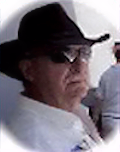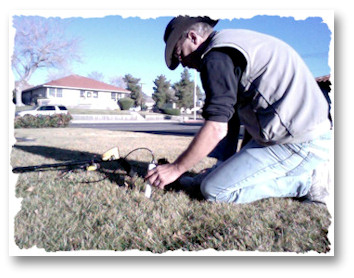Getting The Most Out of Your SunRay Probe

Lowjiber (John)
Not to be confused with a pinpointer, a SunRay is actually a tiny coil (about 1" in diameter) that replaces your search coil with a simple flip of a switch when you're on your knees recovering a target that you've already decided to dig. If you decide to get one, you can simply use it like a regular pinpointer and be happy. However, there are a couple of tips that will shorten your overall recovery time and utilize the full potential of your new detector/probe combination.
[Note] In the text below, I'll be referring to "all-metal" mode and "gain". All-metal mode is simply engaged with the pinpoint button on an Ace 250, or the trigger pull on an MXT. Gain refers to the "Sensitivity" control on the Ace and the "Gain" knob on the MXT. Other machines may vary in terminology, but the concept remains the same.
Remember, both the display and audio functions of your detector remain available when you engage the probe. If you're hunting with your detector set at a lower gain setting, the probe will respond accordingly. We'll see how to capitalize on this below.
"Flipping" shallow (3") targets has never been easier. We"ve all used our detector to pinpoint a target to within a three-inch diameter and started probing the ground to locate/flip the target. Using a SunRay, you can literally identify the exact spot to flip.

Place the detector beside the target, keeping the display visible as shown in the picture below and turn on the probe using the simple switch on the box. You're going to control the functions of the detector with your right hand and exactly locate the target with the probe in your left hand. The key to precision is to HOLD THE PROBE VERTICALLY.
Now, engage all-metal mode (with the trigger or button), and turn your attention to the headset as you move the probe in an 'X' to locate the target. Below the exact spot where the sound is the loudest on both axes of your 'X' lies your target.
Here's a tip that's often overlooked...
There are many times when the mineralization of the soil forces you to hunt with the gain/sensitivity turned way down to stabilize your detector. For example, it's not uncommon in certain parts of the country to hunt the Ace 250 at only two 'bars' of sensitivity, or the MXT on a gain setting of only 7 (very low). The probe will reach about 3" off the tip with just about any setting. However, a simple increase of the gain in all-metal mode will increase that by at least another inch... very handy and easy to do when you need a little more depth. Just remember to reset your gain when you resume hunting.
The same technique can be very useful even when a target is too deep to 'flip'. Knowing the exact center of where you should cut a flap can reduce its diameter, resulting in ground repair after recovery that is much less inclined to be noticeable... always a good thing. It's not perfect, but larger targets or those elusive silver coins can be 'centered' pretty easily with an increased gain and a little practice listening to the faint whisper of the all-metal response in the headset.
I've found that it's often unnecessary to even engage all-metal mode when trying to determine if a target is in my cut flap. Simply wave the probe over the flap and you'll hear the discrimination signal... just like waving the coil over it, only easier and faster.
Mulch filled tot lots are a piece of cake with a SunRay. Its construction is strong enough to literally push your way down to the target... removing excess chips while the moving the probe back-and-forth over the target. Using the probe, you can get under playground equipment where chips have piled up, but you get too much interference with your standard hunting coil. Getting close to chain-link fences has never been easier. Don't laugh... those areas are often overlooked by most detectorists because of the proximity to iron.
Have you ever hit a coin spill that's slightly scattered? Multiple coins in a concentrated area can rapidly recovered without even moving. Just use the probe to locate and recover each one... sure makes it easier on tired bones.
|